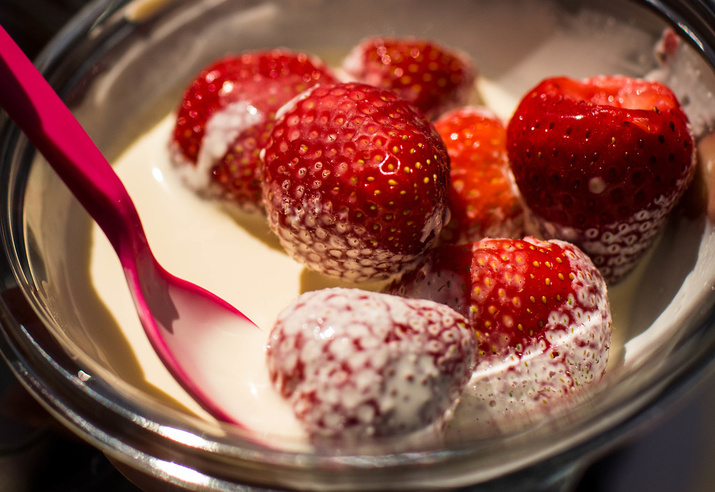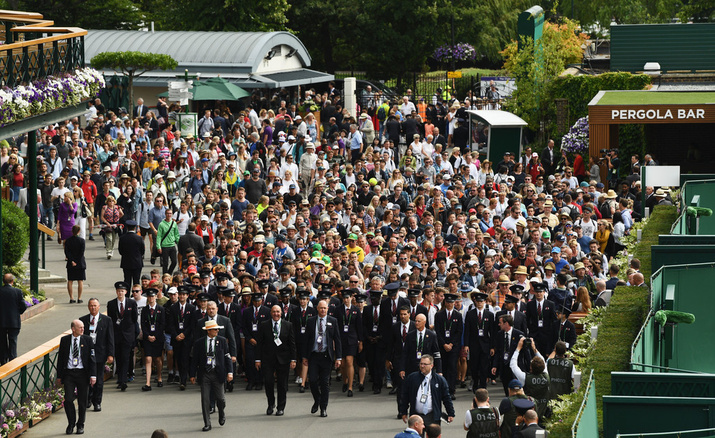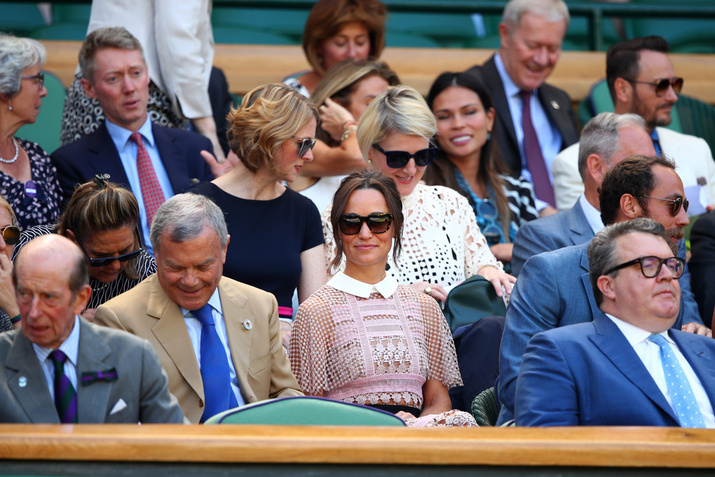Don't miss any stories → Follow Tennis View
FollowWhich Of These Six Wimbledon Traditions Do You Know?
Since its first staging in 1877, the oldest tennis tournament in the world – Wimbledon - has boasted an unrivalled set of traditions, which have elevated its Championships to worldwide recognition.
Whether you’re watching from Centre Court or from your living room, nothing ever visually changes. It feels like time stands completely still in SW19 and it’s all to do with the All England Club’s respect for principles.
Here, we’ve compiled an interesting list of those famous Wimbledon traditions that make the tournament as prestigious as it is today.
Strawberries and cream
Ever since the tournament began over 140 years ago, as a sign that the English summer has arrived, this famous desert has been served up to fans and players alike.

Like pimento cheese sandwiches at the US Masters in golf, over the years, the indulging of strawberries and cream, have become spiritually synonymous with Wimbledon. So much so that the All England Club sell more than 23 tons of the fruit and 10,000 liters of cream each year, with the price of one serving (10 strawberries) at £2.50.
Grass
Wimbledon remains as the only Grand Slam to still be played on the natural grass surface. Once being the most popular tennis surface, the Australian and US Opens used to be played on grass but eventually switched to hard courts.
To stress the size of the battle in persisting with grass courts in SW19, a trained hawk called Rufus is flown for one hour each morning during the Championships to protect the lush manicured grass from pigeon roosting. Now that’s what you call dedication.
Queuing
As quaint and quintessential as Wimbledon is, one of the most unique elements of the tournament is the lengthy queues for admission.
On the evenings after play, if you were to take a brisk walk around the grounds, you will more than likely stumble upon sleeping bags and tents, as people begin queuing for the chance to buy one of the 500 tickets purposely held back for the next day’s play.
Even for a ground pass, lines can begin four to five hours before the start. Don’t forget your alarm clock.

White dress code
Unlike any other tournament in tennis, one of Wimbledon’s principles is that all competitors must wear white clothing. If a player breaks this code, they are offered the loan of a “more suitable” kit by the club.
Over the years, there have been many rebellions to this rule, however, the perpetrators are met with a stern backlash from tournament authorities. A recent example includes Nick Kyrgios who, in 2015, was ordered to turn his headband inside out due to its overcolored frontage. It’s fair to say the Aussie wasn’t best pleased.
Scheduling and rest day
With Wimbledon’s determination to maintain its unique structure, the previous year’s men’s champion always opens the tournament’s first play on Centre Court. As does the women’s champion on the following day. Both these rituals have been in place since its founding.
Meanwhile, another stand-alone policy of the Championships is the rest day it has on the middle Sunday. Often criticised, the day of rest is designed to give players, workers, and the grass courts a short reprieve from the tournaments intensity.

Royals
For over a century, Wimbledon’s relationship with the Royals has been a blossoming one. The first royal visit came in 1907 when Prince George and Princess Mary of Wales made the journey down to the Championships. 15 years later, the 74-seat Royal Box was then built on Centre Court.
Before 2003, all players had to make a bow to the box when walking on Centre Court. However, this rule was adjudged to be obsolete by the Duke of Kent and was eventually banished 14 years ago. Players now must only bow if Queen Elizabeth II or Prince Phillip are in attendance like they were in 2010.
(Photo Sources: David Ramos, Clive Brunskill/Getty Images Europe)










